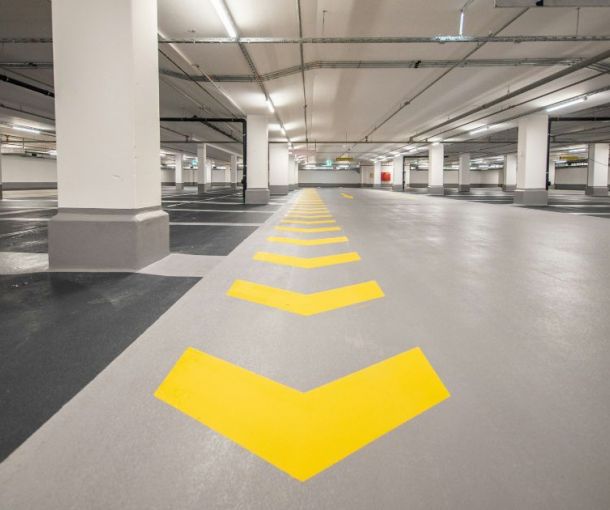
7 Steps for Creating a Secure Building Key Register System
Maintaining control over physical keys is a vital aspect of building security. A well-organised key register system helps track who has access to specific areas, reduces the risk of lost or stolen keys, and ensures accountability among building users. With growing demand for smarter, more efficient building access control systems, creating a secure and reliable building key register has become a top priority for building owners and developers.
Fortunately, with the right steps and tools, building managers can implement a secure, efficient, and auditable key management system that works hand-in-hand with modern digital infrastructure.
According to Build Australia, smart access control systems enhance building security by allowing or restricting entry based on pre-set criteria, providing a more efficient and secure method for managing access.
In this article, we outline seven clear steps to help you create a secure, efficient, and reliable building key register system.
1. Assess Existing Access Points and Key Use
The first step in creating a reliable building key register is understanding the current state of access control. Conduct a full audit of:
- Entry and exit points
- Number of keys issued
- Types of keys (physical, digital, cards, fobs)
- Individuals or contractors with key access
This forms the foundation of your building access system. It’s also an opportunity to identify potential vulnerabilities, such as duplicated keys or unclear access permissions that can compromise security.
For a deeper understanding of how modern systems are changing building security, see our article on the evolution of building access systems.
2. Choose a Digital Key Register or Key Management Software
Replacing manual spreadsheets or paper logs with a digital key register not only improves efficiency but enhances security. A good building key tracking software platform provides:
- Real-time key issuance and return records
- Automated reminders for overdue keys
- Hierarchical access controls
- Audit trails for accountability
When choosing a platform, look for one that integrates seamlessly with your building access control system or smart building entry system, especially if you’re also managing visitor access.
The Urban Developer notes that smart access control systems can be configured to assign specific access rights based on roles, ensuring that individuals only have access to areas necessary for their responsibilities.
3. Define Clear Key Access Policies and Permissions
Without consistent policies, even the best key management system won’t protect your building. Create clear rules that define:
- Who is allowed to access which areas
- How keys or fobs are requested and returned
- Access hours and temporary access limits
- Reporting processes for lost or stolen keys
For added control, implement tiered access levels. For example, giving cleaning staff access only to communal areas after hours.
Additionally, Build Australia also mentioned that smart access control systems can be configured to assign specific access rights based on roles, ensuring that individuals only have access to areas necessary for their responsibilities.
4. Implement Smart Tracking Technology
Modern building access systems use a range of tools for real-time monitoring and secure key tracking. These include:
- RFID tags or barcodes linked to keys
- Electronic key log systems with time-stamped data
- Bluetooth-enabled locks that sync with apps
- Integration with card and fob access credentials
This not only prevents misuse but helps identify bottlenecks in operations, especially in high-traffic buildings or those with rotating contractors.
For more insights on introducing smarter systems, read our article on introducing smarter systems to buildings.
5. Log and Review Every Access Event
A secure key register system should provide detailed logs of every transaction, including:
- Who accessed the key
- Date and time of retrieval
- Purpose of use
- When the key was returned
This level of transparency is crucial for buildings that operate under body corporate or owners corporation regulations, and is particularly important in high-density residential or commercial buildings. Look for community management tools that simplify this process by automating reminders, alerts, and reporting.
Smart Buildings Magazine says that integrating digital access control systems in coworking spaces enhances security by providing real-time monitoring and detailed access logs, which are essential for maintaining operational integrity.
6. Train Staff and Contractors on the System
Technology alone isn’t enough, human error is often the weakest link in access control. Provide clear onboarding and regular training for:
- Property managers
- Maintenance staff
- External contractors and cleaners
Ensure all personnel understand how to log keys, report lost items, and follow access procedures. Using cloud-based or mobile-friendly key management software ensures the process is simple and accessible from anywhere.
As highlighted by FMJ, investing in comprehensive training programs for facilities professionals equips them with the latest knowledge and skills required to operate safely and in compliance with current standards, thereby enhancing overall building security and efficiency.
7. Review and Update the System Regularly
As buildings evolve, so do their access needs. Conduct quarterly reviews of your building key register to:
- Remove inactive users or expired permissions
- Add new access zones or tenant changes
- Update software or firmware
- Identify trends or potential issues through logs and reports
Regular reviews will future-proof your key management system and ensure it keeps up with the building’s needs and security standards. CBRE agrees that contractors must return all authorized keys or entry permits at the end of the workday or upon leaving the site to maintain site security. This ensures ongoing accountability and protects building security.
Final Thoughts: Secure Access is Smart Access
As technology reshapes the property management landscape, securing your building isn’t just about keeping doors locked, it’s about knowing who has access, when, and why. A centralised, secure building key register is essential for any modern building, particularly those looking to scale or streamline operations.
Whether you’re upgrading from a manual logbook or re-evaluating your existing access setup, these seven steps will set your building on the path toward stronger, smarter security.
Ready to modernise your building key register system? Book a demo with MYBOS today to discover how our integrated building and strata software simplifies key tracking, access control, and visitor management, all from one platform.







